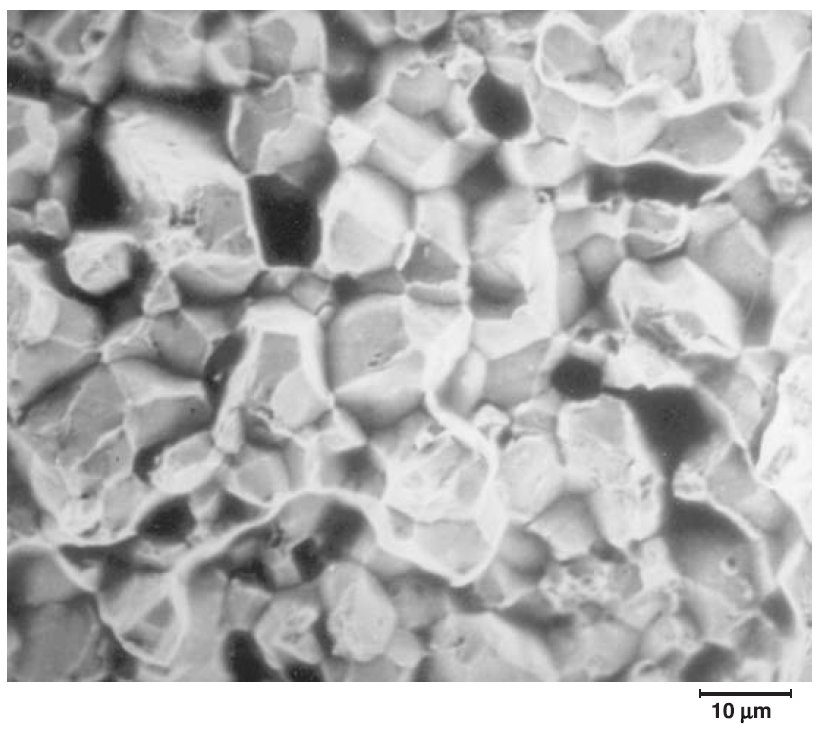
Alphabetical Index
Keyword Search
Casting Defects
Ingot Defects
Slab Defects
Drawing Defects
Forging Defects
Rolling Defects
Bearing Defects
Coating Defects
Corrosion defects
Fractography
Heat Treatment Defects
Machining Defects
Other Defects
Pipeline Defects
Polishing Defects
Rail Defects
Tool Steel Defects
Welding Defects
Internal Defects
Surface Defects
Internal + Surface Defects
Contact Us
Help
Home
Hydrogen embrittlement: Failure of a rocket suspension lug - Fractography

Figure 1: Rocket suspension lug.

Figure 2: Intergranular fracture of the lug.
Defect name: Hydrogen embrittlement
Record No.: 2947
Type of defect (Internal/Surface): Internal, surface
Defect classification: Fractography
Steel name: Steel
Steel composition in weight %: No data.
Note: Hydrogen embrittlement is a phenomenon commonly found in high-strength steels after they are exposed to environments
in which hydrogen is produced. Cadmium plating is a
common surface protection treatment for high-strength steels to
guard against corrosion. If proper precautions are not taken, the hydrogen produced during plating can diffuse into the metal and
lead to intergranular brittle cracking without warning. A lug for
suspending a rocket from an aircraft, made of a high-strength steel,
had been cadmium plated. The cadmium plated lug (Fig. 1) was
kept in the stores in a tightened condition for a length of time.
Subsequently, when an attempt was made to loosen the lug for
fitting the rocket, it was found cracked inside, with a distinct intergranular
fracture, typical of hydrogen embrittlement (Fig. 2).
Hence, immediately after cadmium plating, it is mandatory to bake
such cadmium-plated steel components to expel the hydrogen absorbed
by the material during the plating operation. ASTM standard
procedures for baking are available.
Reference: Not shown in this demonstration version.